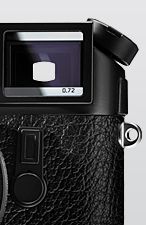Very useful APO lens, 280 ~ 800 mm

It provide the details of digital cameras, flashes, tripoids, binoculars, lenses, studio systems, etc..

Most USM-equipped lenses allow full-time manual focus even in the AF mode. The ring USMs are suitable for large aperture lenses and super telephoto lenses, and the Micro USMs for smaller lenses.The amplitude width of the elastic stator is only around 0.001mm.
The USM,Ultrasonic Motor, is a driving motor that Canon commercialized for the first time on camera lens in the world. Ultrasonic motors, are based on a different principle in which rotational force is producing from ultrasonic vibration energy. USM makes focusing very faster, high accurate and quieter than ordinary focusing drive motor and speed-reducing gear train.
USM construction is very very simple, consisting of an elastic stator and a rotating rotor. The stator with a piezoelectric ceramic type elements in that, while energized by an AC voltage, it vibrates and to generate ultrasonic vibration energy. That vibration energy is using to produce continuously rotate the rotor through the pressure contact between the rotor and stator.
The rear and inner focusing systems have the following benefits.
1. Easy handling of the lens because of unchanged total length of the lens during focusing. 2. Easier to shorten the minimum shooting distance compared to the all-group focusing and front-group focusing methods. 3. Easier operation of the polarizing filters because of non-rotating front frame.

The rear and inner focusing systems are developed mainly to reduce the weight of moving focusing lens group. The rear and inner focusing systems employ, as a focusing lens group, optical systems other than the front lens group.
